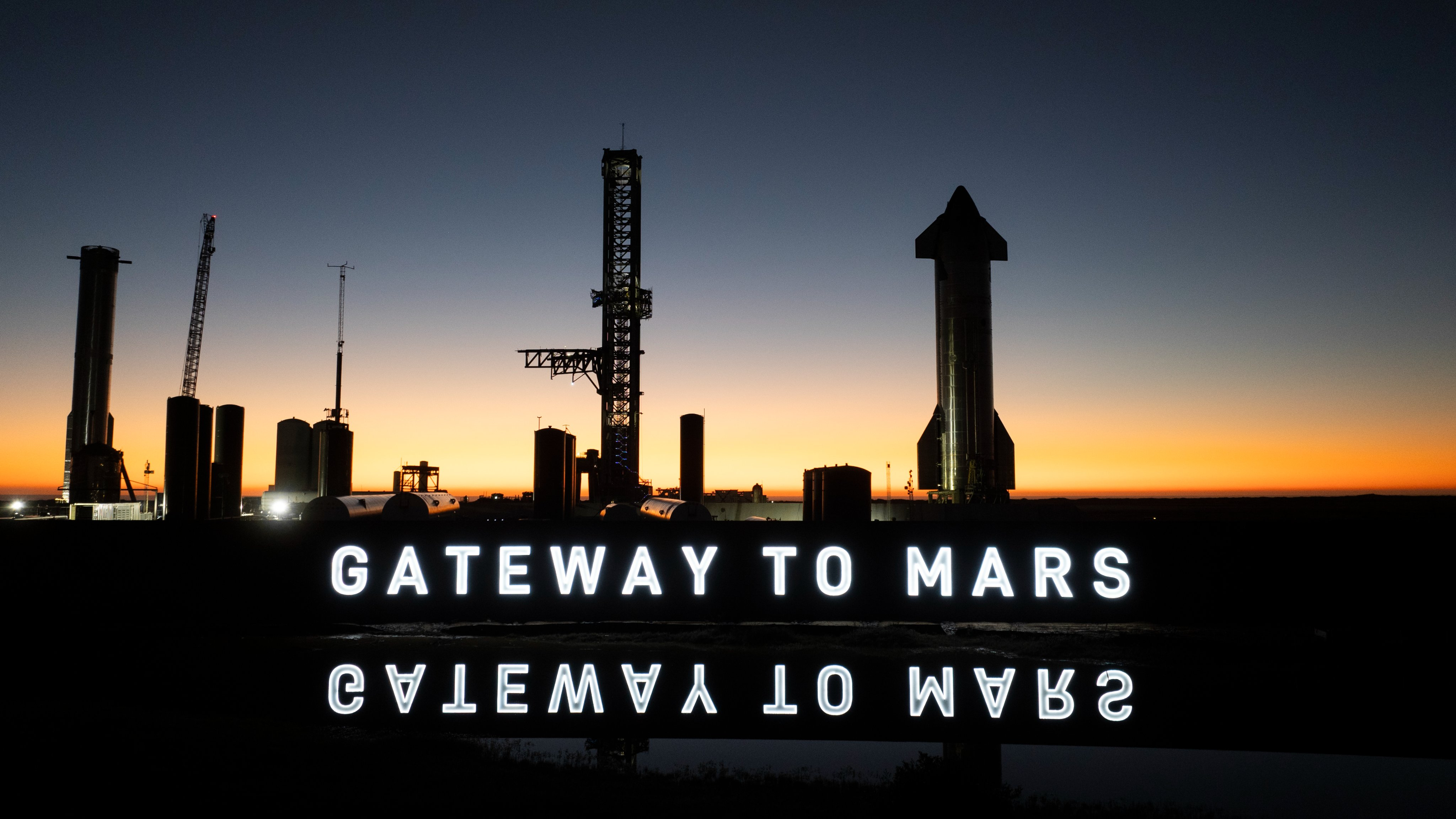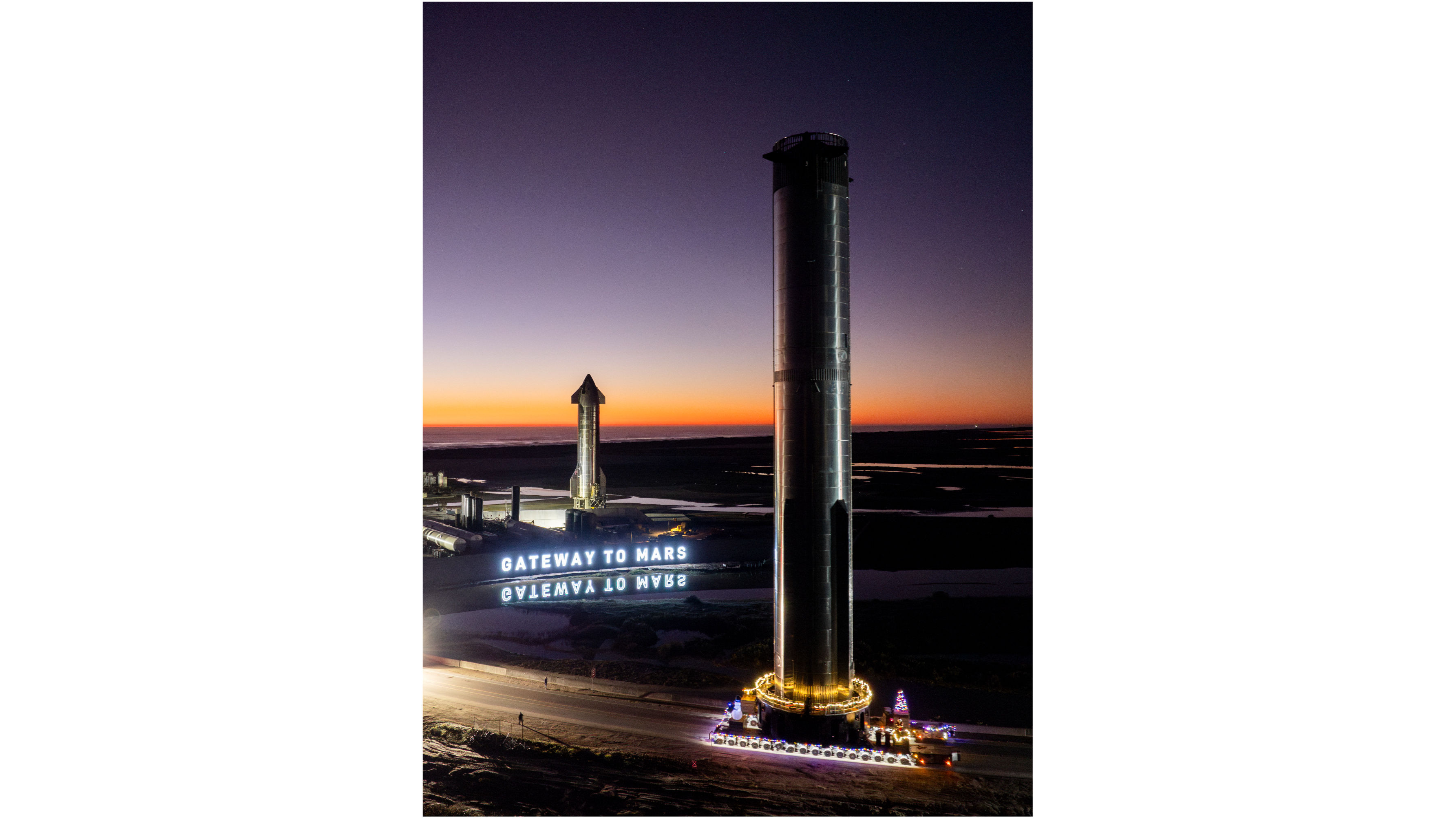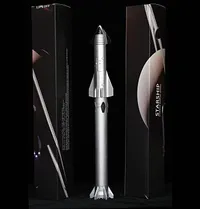SpaceX gearing up for 3rd Starship flight (photos)

A month after its latest liftoff, SpaceX's giant Starship rocket is getting ready to fly again.
Starship launched Nov. 18 on its second-ever test mission, which ended in two spectacular explosions. But the company, as ever, is gearing up for the next try.
"Flight 3 vehicles on the pad at Starbase for testing ahead of Starship's next launch," SpaceX wrote today (Dec. 18) in a post on X (formerly known as Twitter) that shared three photos of the spacecraft involved. (Starbase is SpaceX's South Texas site, which serves as the center for Starship manufacturing, testing and launch.)
Related: SpaceX's 2nd Starship launch looks amazing in stunning photos and videos
Starship, the biggest and most powerful rocket ever built, consists of two reusable stages: A first-stage booster known as Super Heavy and a 165-foot-tall (50 meters) spacecraft called Starship. SpaceX is developing the vehicle to help get humanity to the moon and Mars, and to perform a variety of other spaceflight tasks as well.
Starship has flown twice to date, on April 20 and Nov. 18 of this year. Both test missions lifted off from Starbase, and both had the same ultimate goal: To send the upper-stage spacecraft most of the way around Earth, to a Pacific Ocean splashdown zone near Hawaii.
The debut flight ended after just four minutes. Starship suffered a number of problems, including the early conk-out of some of its Raptor engines and the failure of its two stages to separate, and SpaceX destroyed the vehicle with a controlled detonation high in the Texas sky.
Breaking space news, the latest updates on rocket launches, skywatching events and more!
The Nov. 18 mission was more successful. Super Heavy's 33 Raptors aced their initial burn, and the booster separated successfully from the Starship upper stage. However, Super Heavy exploded while coming back to Earth for a planned Gulf of Mexico splashdown, and Starship went boom as well, about eight minutes after launch.
Starship Die Cast Rocket Model Now $69.99 on Amazon.
If you can't see SpaceX's Starship in person, you can score a model of your own. Standing at 13.77 inches (35 cm), this is a 1:375 ratio of SpaceX's Starship as a desktop model. The materials here are alloy steel and it weighs just 225g.
Note: Stock is low so you'll have to act quickly to get this.
SpaceX likes to move fast, as the current testing shows. Indeed, company founder and CEO Elon Musk said just after the Nov. 18 launch that the third Starship vehicle should be ready to fly by the end of the year.
But technical readiness isn't the only factor in play here. The U.S. Federal Aviation Administration (FAA) is currently overseeing an investigation into what happened on the Nov. 18 flight, which the agency deemed a mishap.
The FAA grants launch licenses, and SpaceX won't get one for the upcoming third Starship flight until the investigation is over and the company has implemented whatever corrective actions (if any) the FAA requires.

Michael Wall is a Senior Space Writer with Space.com and joined the team in 2010. He primarily covers exoplanets, spaceflight and military space, but has been known to dabble in the space art beat. His book about the search for alien life, "Out There," was published on Nov. 13, 2018. Before becoming a science writer, Michael worked as a herpetologist and wildlife biologist. He has a Ph.D. in evolutionary biology from the University of Sydney, Australia, a bachelor's degree from the University of Arizona, and a graduate certificate in science writing from the University of California, Santa Cruz. To find out what his latest project is, you can follow Michael on Twitter.



